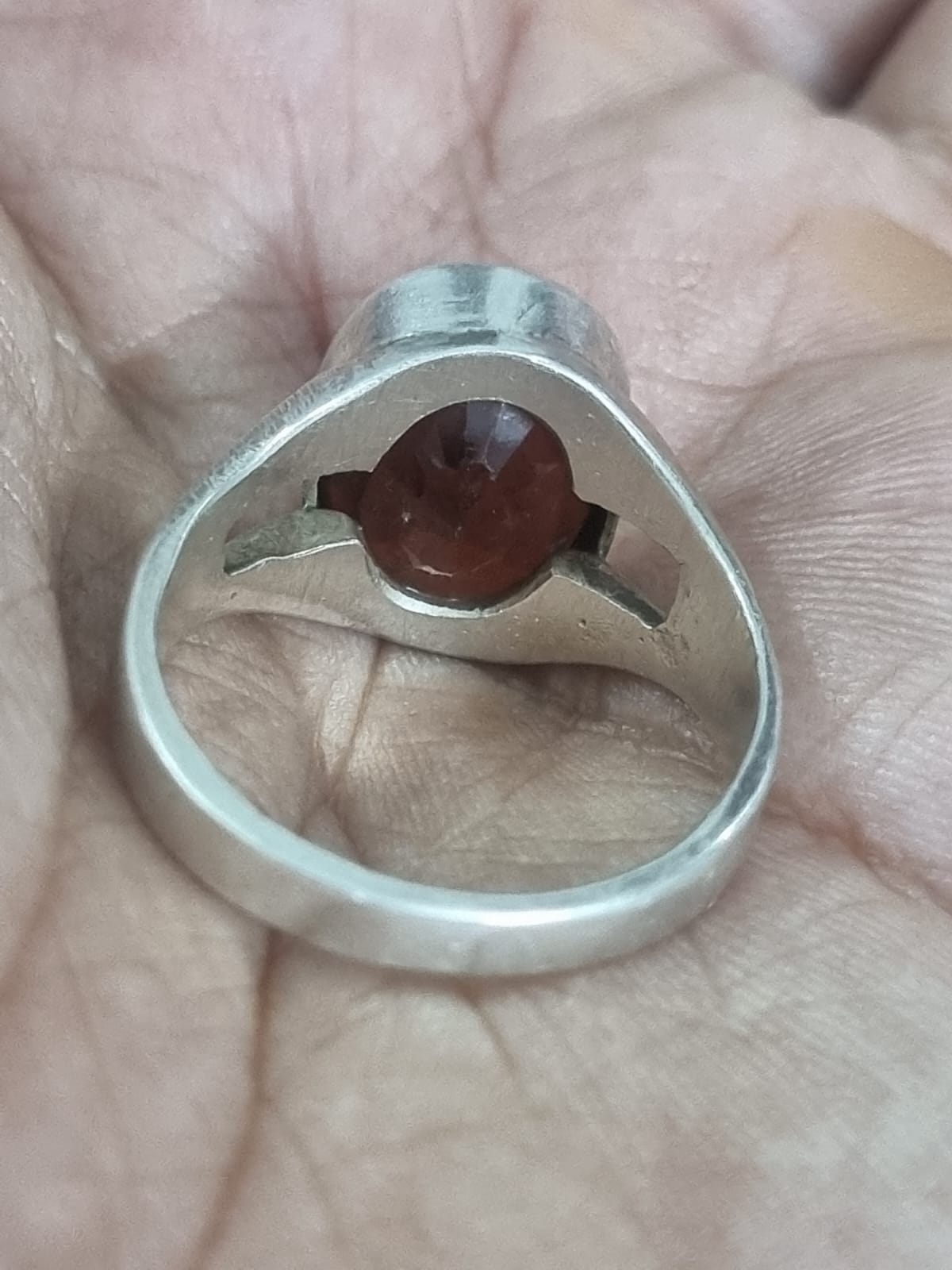How to Identify an Original Rudraksha

How to Identify an Original Rudraksha: A Comprehensive Guide
Rudraksha, a sacred seed in Hinduism, is deeply revered for its spiritual and healing properties. It is believed to be the tears of Lord Shiva and holds a significant place in spiritual practices. With the growing popularity of Rudraksha beads, the market is flooded with counterfeit or altered Rudraksha seeds. Knowing how to identify an original Rudraksha is crucial to ensuring that you are receiving the authentic benefits that this sacred bead offers. This guide will walk you through the various methods to identify an original Rudraksha and ensure you invest in a genuine bead.
Understanding Rudraksha
What Is Rudraksha?
Rudraksha is the seed of the Elaeocarpus ganitrus tree, primarily found in the Himalayan region, as well as parts of Southeast Asia and Indonesia. These seeds are known for their distinctive clefts or facets called "mukhi," which range from one to 21 faces. Each type of Rudraksha is believed to have different spiritual benefits and is associated with specific deities and planets.
Spiritual Significance of Rudraksha
- Connection to Lord Shiva: Rudraksha is closely associated with Lord Shiva and is believed to embody his energy.
- Healing Properties: Rudraksha beads are known for their ability to calm the mind, balance energy, and protect the wearer from negative influences.
- Astrological Benefits: Different mukhis of Rudraksha correspond to different planets and are used to pacify malefic planetary influences in one’s horoscope.
How to Identify an Original Rudraksha: Key Methods
1. Examine the Mukhi (Faces) of the Rudraksha
Counting the Mukhi
- Method: An authentic Rudraksha will have natural clefts or lines running from the top to the bottom of the seed. These lines are called mukhi, and their number determines the type of Rudraksha.
- What to Look For: Ensure that the mukhi are well-defined and evenly spaced. The lines should be clear and unbroken, running from one end of the seed to the other.
Test for Artificial Lines
- Method: Counterfeit Rudraksha may have artificially carved lines to mimic the natural mukhi. Use a magnifying glass to inspect the lines closely.
- What to Look For: If the lines appear unnatural, uneven, or too perfect, the Rudraksha may be fake.

2. Perform the Water Test
Float or Sink Test
- Method: Drop the Rudraksha bead into a glass of water.
- What to Look For: An original Rudraksha should sink to the bottom of the glass. However, it's important to note that some fake Rudraksha beads are weighted to sink, so this test alone is not definitive.
Milk Test
- Method: Soak the Rudraksha in a glass of milk overnight.
- What to Look For: If the milk remains fresh and does not sour, it is believed to be an indication that the Rudraksha is genuine.
3. Touch and Feel the Bead
Texture and Weight
- Method: Gently hold the Rudraksha between your fingers and observe its texture and weight.
- What to Look For: An original Rudraksha will have a rough, thorny texture, unlike a smooth surface, which may indicate a fake. The bead should also feel relatively light.
Energy Test
- Method: Hold the Rudraksha in your hand and close your eyes, focusing on the sensation it gives you.
- What to Look For: Many people believe that an authentic Rudraksha emits a subtle but discernible energy or warmth. If you feel a positive, calming energy, it is likely genuine.

4. Check for the Presence of Natural Holes
Central Hole
- Method: An original Rudraksha will have a natural hole in its center, which is where the string is passed through for wearing.
- What to Look For: Ensure the hole is natural and not artificially drilled. The edges of the hole should be rough and irregular, not smooth.
End to End Drilling
- Method: Insert a needle or pin through the central hole to check if it passes smoothly from one end to the other.
- What to Look For: The needle should pass through easily if the hole is natural and not artificially created.
5. Test the Rudraksha with Copper Coins
Electrostatic Test
- Method: Rub the Rudraksha between two copper coins and observe any reaction.
- What to Look For: If the Rudraksha is genuine, it may exhibit a mild electrostatic reaction, such as attracting small particles or hair. This is due to the natural electromagnetic properties of the bead.
6. Inspect the Color and Shape
Natural Coloration
- Method: Observe the color of the Rudraksha carefully.
- What to Look For: Original Rudraksha beads have a natural, earthy color, usually ranging from light brown to dark brown. Be cautious of beads that are unnaturally bright or uniformly colored, as they may be dyed or chemically treated.
Irregular Shape
- Method: Examine the shape of the Rudraksha.
- What to Look For: Authentic Rudraksha beads are rarely perfectly round. They are usually slightly irregular in shape, with natural grooves and indentations. A perfectly round or symmetrical bead may be a sign of a fake.
7. Consider the Source and Certification
Reputable Sellers
- Method: Purchase Rudraksha from reputable sellers who specialize in spiritual or religious products.
- What to Look For: Ensure the seller provides a certificate of authenticity and has positive reviews or a solid reputation.
Laboratory Certification
- Method: Some high-quality Rudraksha beads come with a laboratory certification that verifies their authenticity.
- What to Look For: A genuine Rudraksha will often be accompanied by a certificate from a recognized gemological laboratory, confirming its type, origin, and authenticity.

Common Myths About Identifying Original Rudraksha
1. The Size and Shape Myth
- Myth: Bigger Rudraksha beads are always more powerful.
- Truth: The size of the Rudraksha does not determine its potency. What matters is the authenticity and the number of mukhi.
2. The Cost Myth
- Myth: Expensive Rudraksha beads are always genuine.
- Truth: Price is not always an indicator of authenticity. Some sellers may overcharge for fake beads. It’s essential to focus on the identification methods rather than the price.
3. The Perfect Bead Myth
- Myth: A perfectly shaped Rudraksha is more powerful.
- Truth: Authentic Rudraksha beads are naturally irregular and may have minor imperfections. A perfectly shaped bead could be an indicator of tampering or artificial shaping.
Final Thoughts
Identifying an original Rudraksha is essential to fully benefit from its spiritual and healing properties. By examining the mukhi, performing water and touch tests, inspecting the color and shape, and ensuring the bead is sourced from a reputable seller, you can confidently identify a genuine Rudraksha. Always be cautious of counterfeit beads and remember that the true power of Rudraksha lies in its authenticity and spiritual significance.
---------
Also you can buy high quality gemstones of various ratti at affordable prices from Vedic Crystals
For more information about Vedic Crystals and our range of gemstones and rudraksha beads, visit Vedic Crystals website or contact us at contactus@vediccrystals.com/ +91-9811809967 (Whatsapp).
Also if you found this article useful , please share it with someone who might need it.
Moreover, in case you want a additional 5% discount coupon on our entire range of gemstones and Rudraksha : Please comment "Interested" below.











